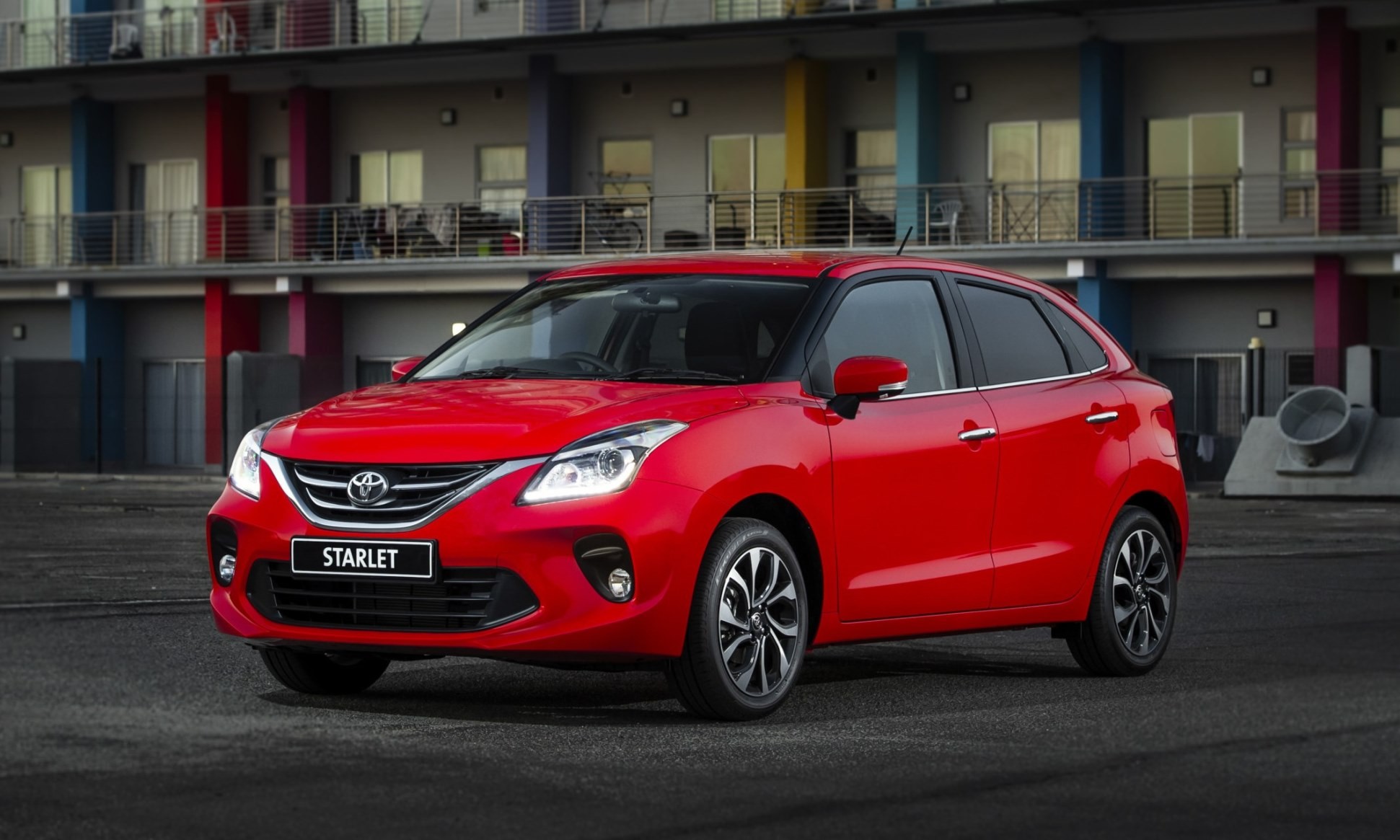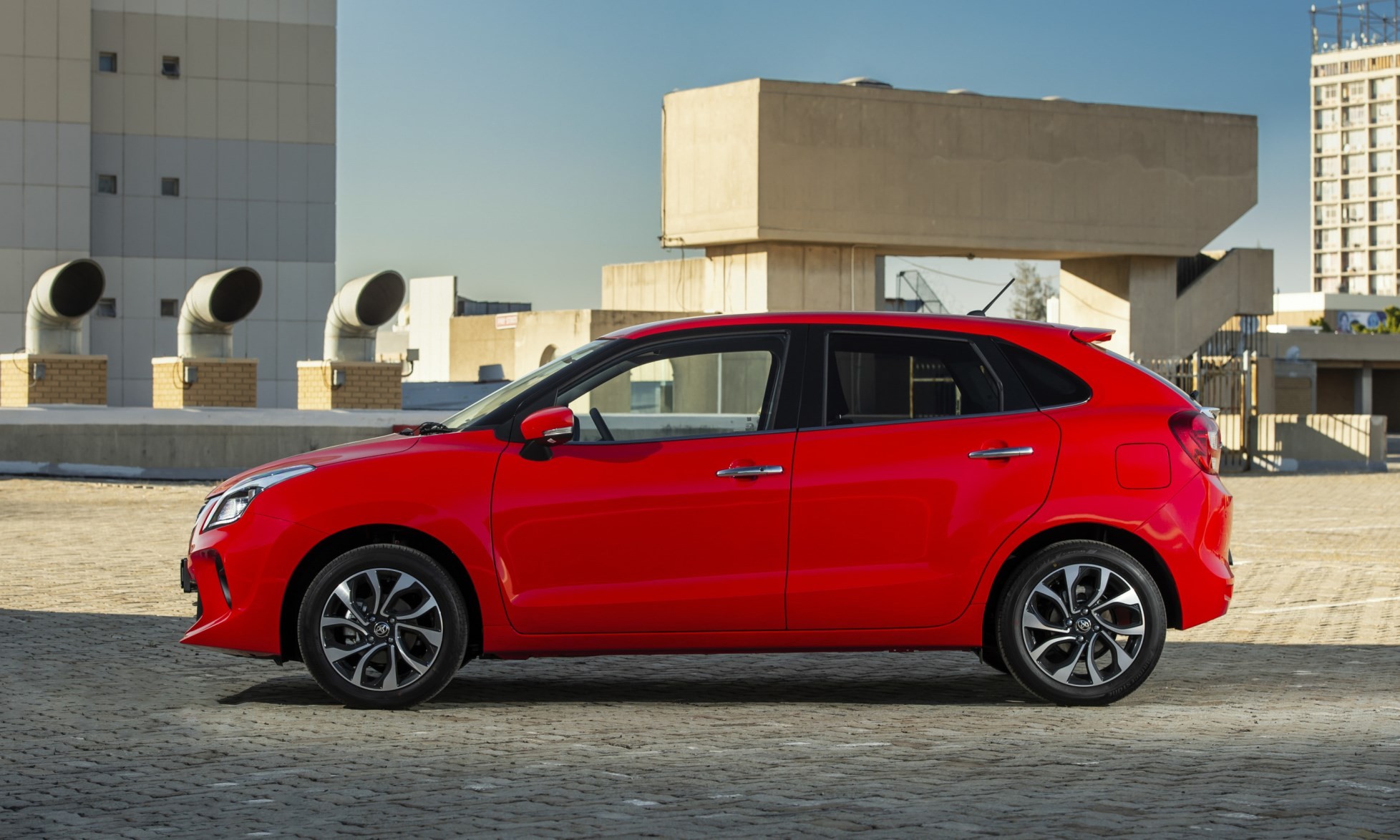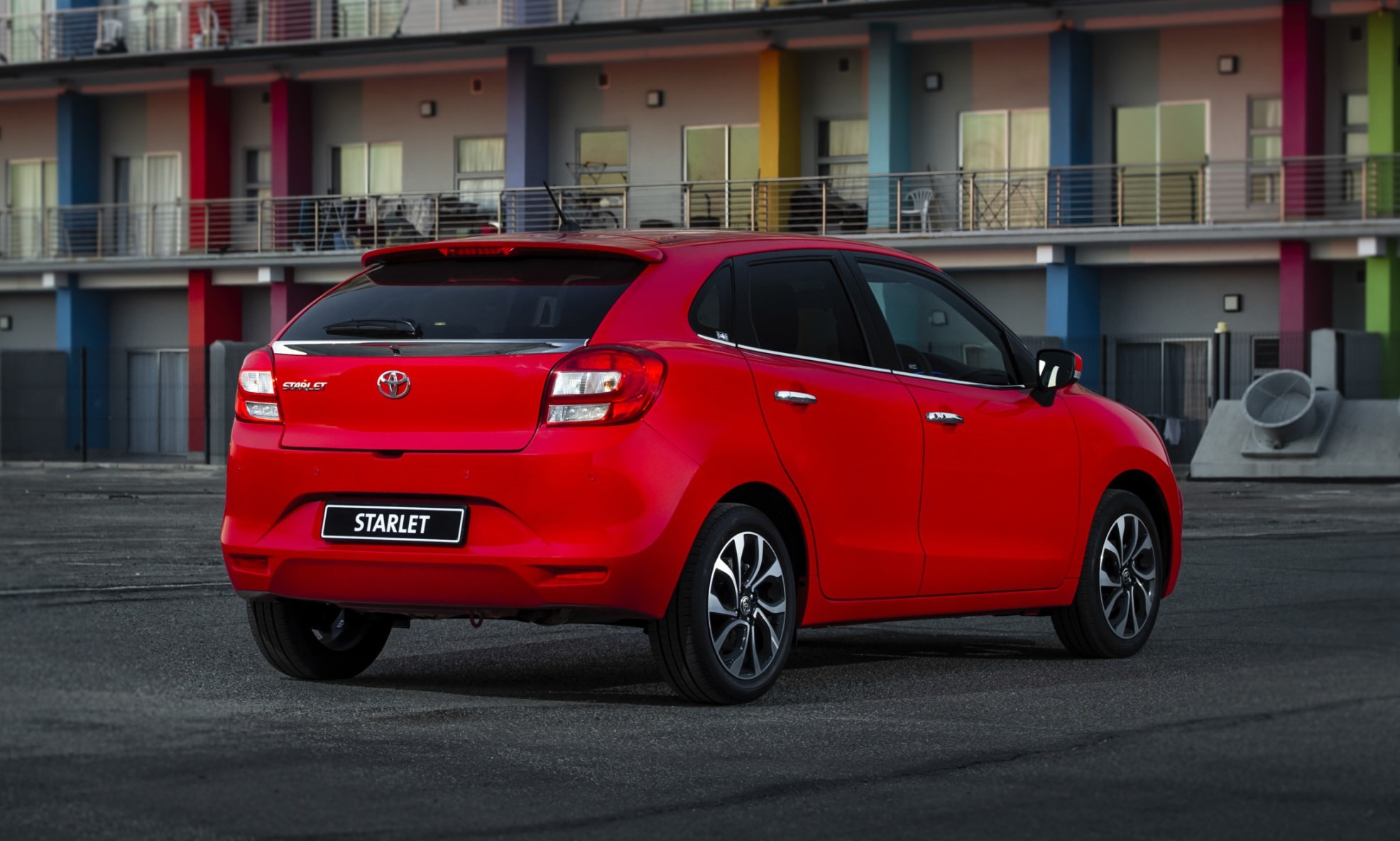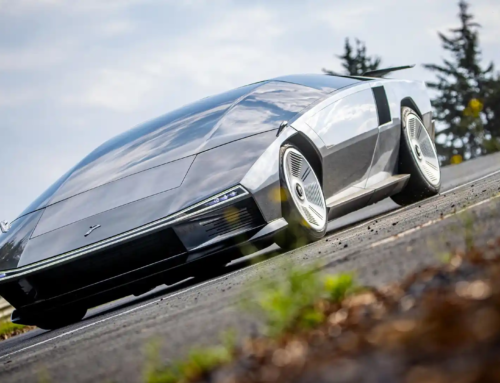A new entry-level hatchback has been added to the South African new car market. The Toyota Starlet makes its debut today as a new addition to the portfolio. In doing so the Starlet takes over from the Etios, which has now been discontinued in both hatch and sedan shapes. At the other end of the passenger car scale Toyota will debut race-ready hypercar, which you can read about here. The Toyota Starlet is the first product of a joint venture between Japanese automakers Suzuki and Toyota. The model may already be known to some SA buyers as the Suzuki Baleno. The Starlet slots into the same sub-B segment vacated by the Etios, which boasts the second highest share of new passenger vehicle sales in South Africa.
Follow Double Apex on Instagram and Facebook where we share more car content.
Order from our online store and take advantage of free delivery in South Africa on orders over R349.
Familiar appearance
As it is based on the Baleno, the Toyota Starlet’s appearance is not unfamiliar. The Baleno was recently facelifted and that newer treatment is what we see on the Starlet. There are, obviously, some differentiators between the two offerings. This includes the specific v-shaped front grille with centrally-mounted Toyota insignia and chrome inlay and the Toyota specific wheels.
With an overall length that is 220 mm longer than the outgoing Etios hatch, the Starlet offers more cabin space. The appearance of the interior treatment seems more modern and upmarket than that of the Etios. All derivatives offer air-conditioning, electric power steering, dual 12-volt power outlets, electric windows, tilt-adjustable steering column, 60/40 split rear seats, power-adjustable side mirrors and remote central locking as standard.
Xi and Xs models feature an audio system with CD/Bluetooth/USB/Aux functionality. The top-spec Xr versions offer a touchscreen interface with Android Auto and Apple CarPlay integration for navigation, telephony and audio-streaming services. The screen also doubles as the display for the rear-facing camera. In an effort to appeal to younger, tech-savvy buyers all Starlet grades are equipped with the Toyota Connect telematics system which includes an in-car Wi-Fi hotspot and complimentary 15 Gb of data.
Standard safety kit
If you are considering the Starlet for your younger loved ones you’ll be happy to hear it comes with a full suite of standard safety equipment as standard. This includes ABS, EBD, brake assist (BA) and vehicle stability control (VSC). Xi and Xs models are fitted with dual front airbags, while the Xr variants add curtain and side airbags
Powertrain options
There is just one engine available across the Starlet range. It is a 1,4-litre multi-valve four-cylinder. Peak power from the naturally aspirated motor is 68 kW with maximum torque of 130 N.m produced at 4 200 r/min. The inline four is mated with choice of a five-speed manual or four-speed automatic that is connected to the front wheels. Toyota says the Starlet can return between 5,1 and 5,4 litres/100 km depending on powertrain option.
Pricing
Starlet 1,4 Xi MT – R204 900
Starlet 1,4 Xs MT – R215 200
Starlet 1,4 Xs AT – R235 700
Starlet 1,4 Xr MT – R258 500
Starlet 1,4 Xr AT – R272 500
All Starlet models are sold with a three-services/45 000 km service plan and a three-year/100 000 km warranty.






![Koenigsegg Sadair’s Spear is a Limited-Edition Track Weapon [w/video]](https://doubleapex.co.za/wp-content/uploads/2025/07/Koenigsegg-Sadairs-Spear-rear-500x383.webp)


![Chevrolet Corvette ZR1X: An American Hypercar [w/video]](https://doubleapex.co.za/wp-content/uploads/2025/06/Corvette-ZR1X-with-aero-kit-500x383.webp)
Leave A Comment